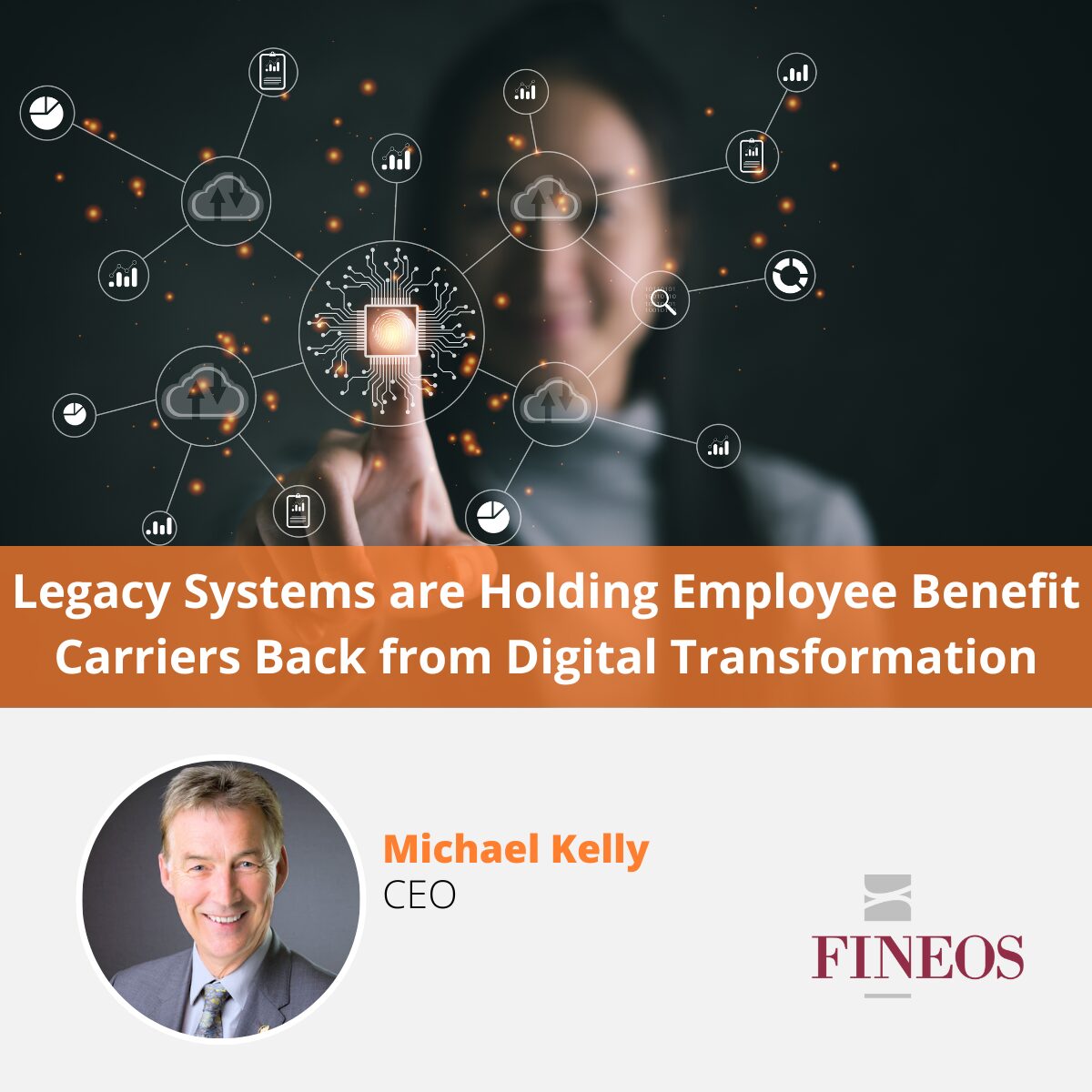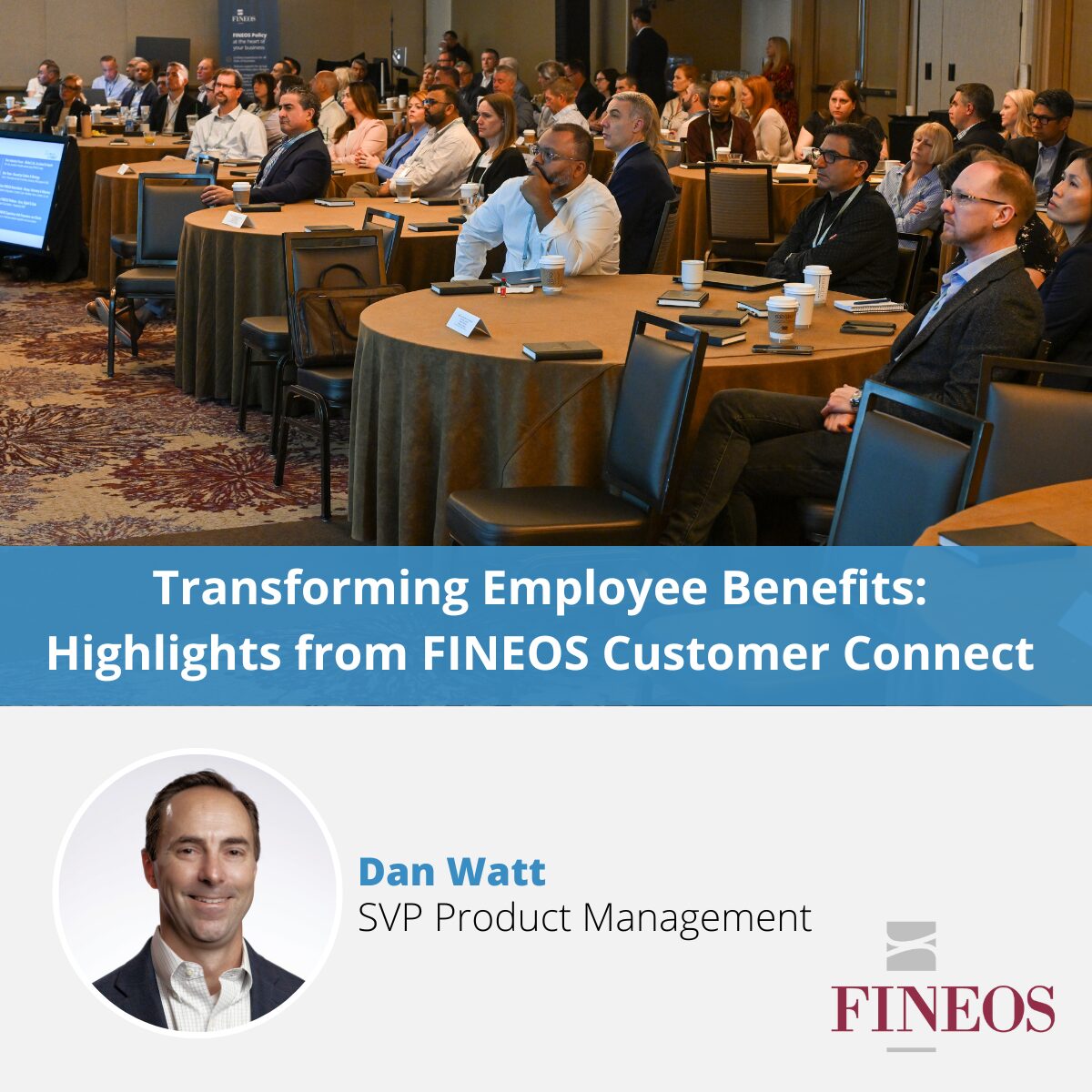I’ve been reflecting on the past year in group and voluntary insurance, and a snapshot of an evolving industry emerges. The key topics that capture my thoughts center around increased demand for benefits, claims integration, and technology solutions to increase efficiency while providing a better customer experience. Let’s explore that.
Increased demand for benefits
The pandemic made us realize the importance of financial wellness. Employee benefits are a significant contributor to financial wellness that include medical, life, voluntary and mental wellness. No surprise – employers are feeling the pressure to beef up their benefits packages to attract and retain top talent. According to LIMRA research, “3 in 5 U.S. employers are considering adding a new insurance benefit within the next two years. … If all the organizations considering new insurance benefits follow through, approximately 784,000 employer groups will introduce a new insurance benefit over the next two years, reaching more than 86 million employees.”
So, what comes next?
While many talk about unique offerings such as legal assistance, identity theft protection and pet insurance, what is really gaining attention from employees (and by default, employers) are voluntary, life, and mental health benefits. A Paychex survey found “51% of respondents said their mental health had worsened during the pandemic.” While this is not shocking, it is indicative of the need for employers to lean in to offering more mental health benefits.
Where claims integration really matters
We all live in an era of instant gratification and the benefits world is no different. Claims integration is one area where instant gratification is not only warranted but imperative: people who are likely out of work and facing medical bills shouldn’t have to jump through a lot of hoops to receive their payments. From the employee’s perspective, filing and managing claims is a life event. For example, I fell off my bike and broke my ankle.
- Claims integration simplifies the process not only for the employee claimant, but also for the carrier and the employer.
- The claimant’s burden is reduced to one phone call or self-service submission for all their benefits i.e., disability, AI, HI.
- They receive one letter outlining information about their available benefits, and the status of the claim, leading to minimal red tape and increased satisfaction during what’s already a difficult time.
- The insurance carrier enables a single case manager to handle the entire life event where appropriate within the carrier’s processes and regulations.
- With only one call to file a claim across all available benefits, call volume declines, as does paperwork with a single letter outlining the claimant’s benefits.
Achieve greater efficiency and lower costs per claim:
- Employers understand better benefits utilization to inform their future offerings from the rich data within claims integration.
- Employees are more satisfied with processes that are streamlined and easier to navigate.
- Increased claims integration helps meet the demands from insurers to serve their customers with lower cost and enhanced service, which satisfies the employer and the employee. That’s a win-win.
Technology delivers efficiency
The insurance industry continues to realize benefits from embracing modern technology solutions.
- OCR extracts printed or written text from a scanned document or image file and converts it to a machine-readable form. This can increase straight-through processing of claims because the forms do not need to be reviewed by a person. It eliminates human error, providing cost savings to the carrier. Forms that always capture the same information, such as a death certificate form for a life claim are good candidates for using this type of technology.
- Automated workflow via predictive analytics can maximize the skills of claims staff and clear claims more efficiently. For example, claims scoring can ensure a claim is handled by the appropriate claims manager. If a claim has a score of x, then it can be handled by a junior claims examiner. If a claim has a score of y, then it should be handled by a senior claims examiner.
- No-touch or straight-through claim processing via predictive analytics speeds processing and payment for thousands of routine claims. Analytics can be run on a specific type of claim for a period of time to determine how often a case manager must touch it, how often fraud is identified, and what percentage of claims saw no intervention from a case manager and little to no fraud identified. Depending on all those outcomes, the carrier or the employer can set up that type of claim for a no-touch or straight-through processing model. A kind of claim that would likely meet the above criteria would be a normal pregnancy. Letting their data work for them allows the carrier to gain efficiency and save money.
What’s next?
The years ahead will see the group benefits industry challenged by the increasingly transient nature of the workforce. The Great Realignment is requiring employers to exercise creativity in their benefits offerings – and it follows that carriers will reach for technology solutions to help them manage risk and deliver better service to employers and their employees.
Find out more about FINEOS Platform technology solutions today.


